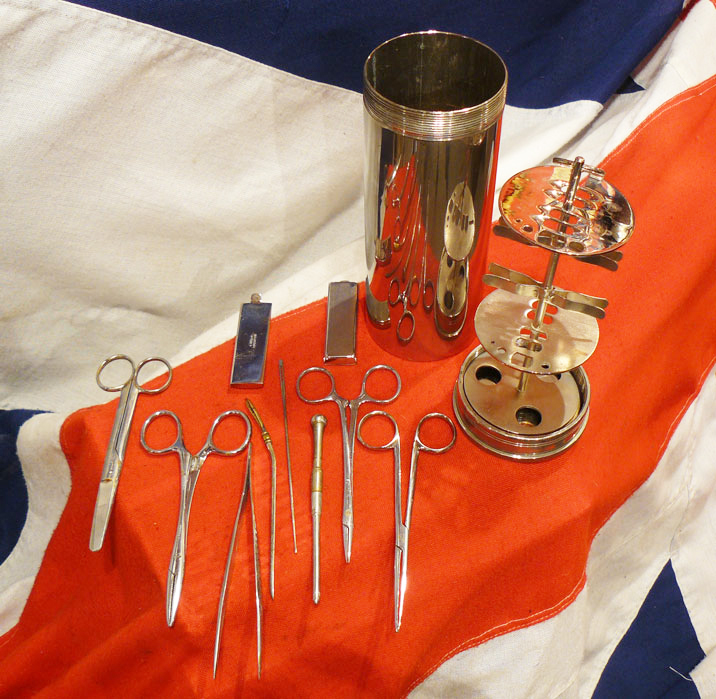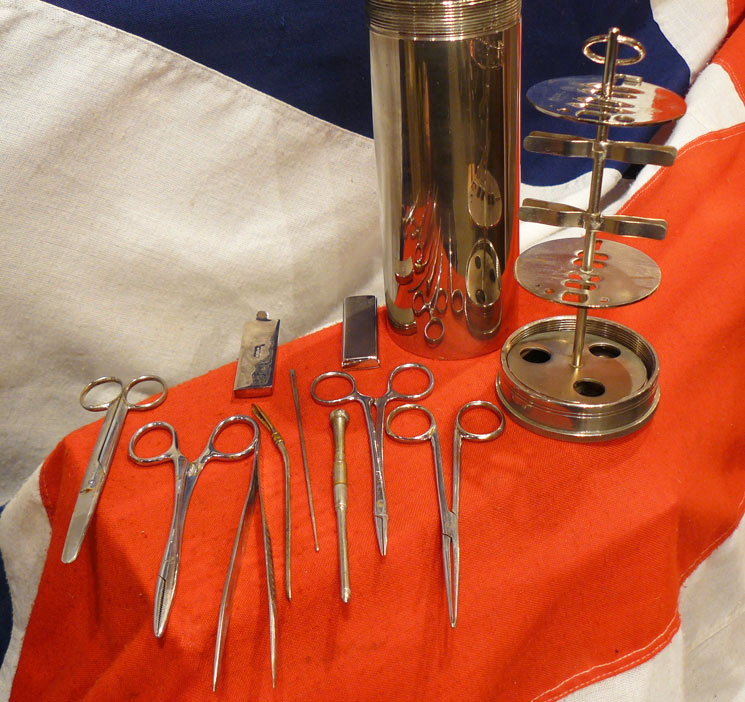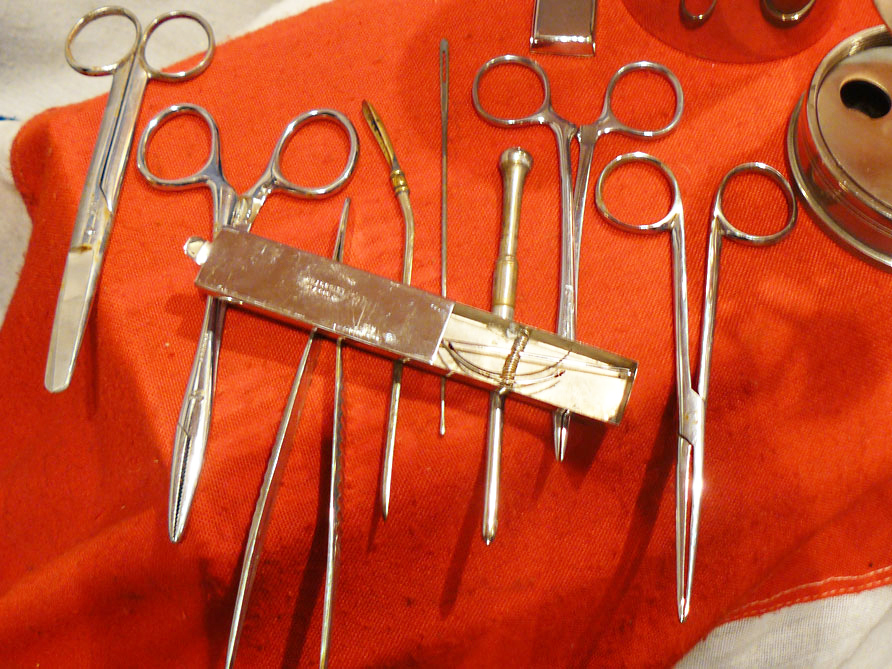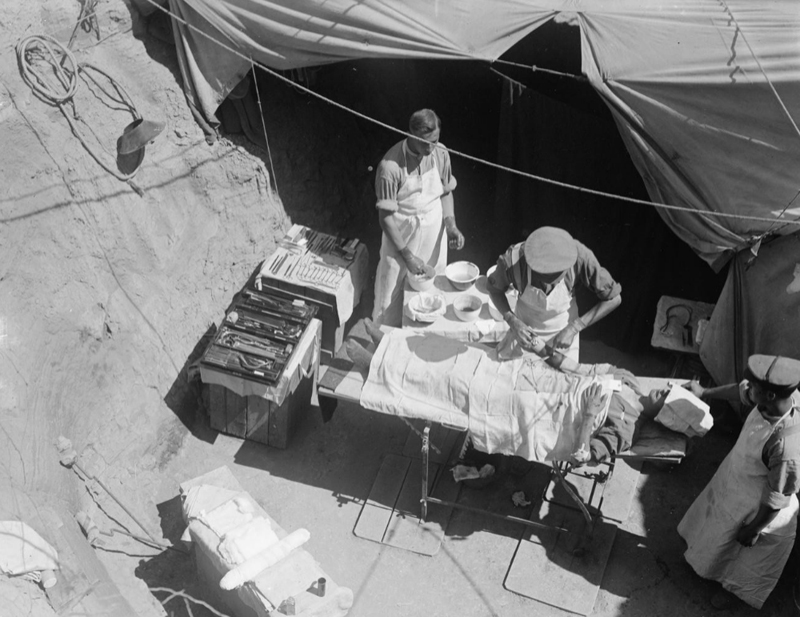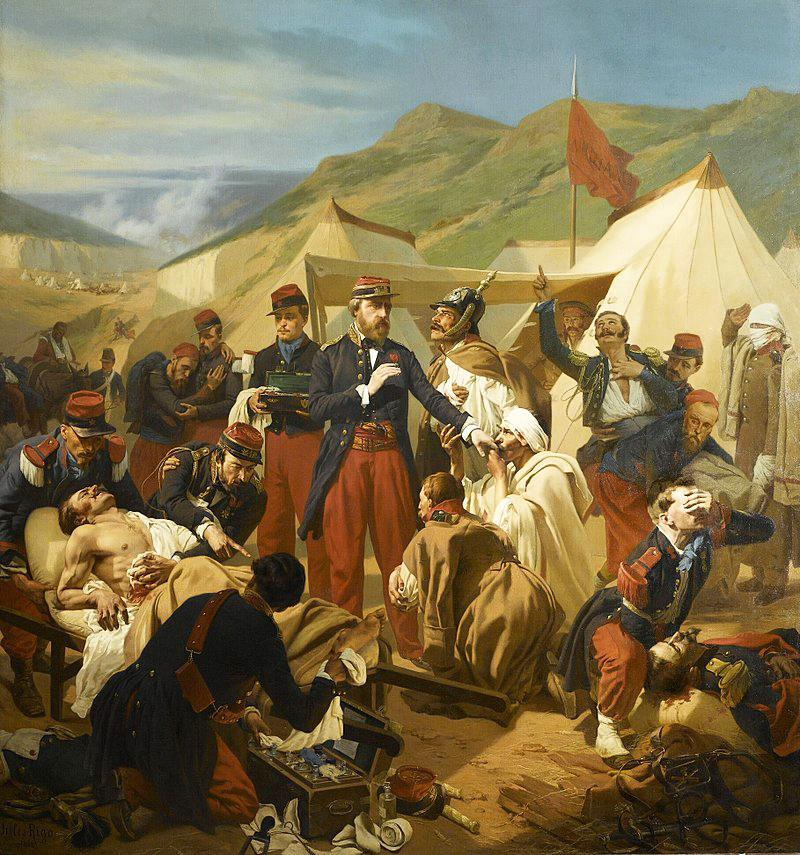A Superb Vintage, Wartime, British Military Surgeon's Campaign Set, A Nickel Plated Medical Instrument Cylinder, With In-Built High Pressure Sterilizer
With numerous tools, scissors clamps etc., and cases for needles and blades, for principally bullet and shrapnel extractions. One instrument lacking. Superbly engineered, and a beautiful quality piece.
Maker marked by Brown of Leicester. It appears that the case may be designed to be pressure boil sterilized in the field of combat, with a pressure release type system built into the lid. The significance of military medicine for combat strength goes far beyond treatment of battlefield injuries; in every major war fought until the late 19th century disease claimed more soldier casualties than did enemy action. During the American Civil War (1860-65), for example, about twice as many soldiers died of disease as were killed or mortally wounded in combat. The Franco-Prussian War (1870-71) is considered to have been the first conflict in which combat injury exceeded disease, at least in the German coalition army which lost 3.47% of its average headcount to combat and only 1.82% to disease. In new world countries, such as Australia, New Zealand, the United States and Canada, military physicians and surgeons contributed significantly to the development of civilian health care.
Improvements in military medicine have increased the survival rates in successive wars, due to improvements in medical evacuation, battlefield medicine and trauma care. Similar improvements have been seen in the trauma practices during the Iraq war. Some military trauma care practices are disseminated by citizen soldiers who return to civilian practice. One such practice is where major trauma patients are transferred to an operating theater as soon as possible, to stop internal bleeding, increasing the survival rate. Within the United States, the survival rate for gunshot wounds has increased, leading to apparent declines in the gun death rate in states that have stable rates of gunshot hospitalizations
Code: 22685



